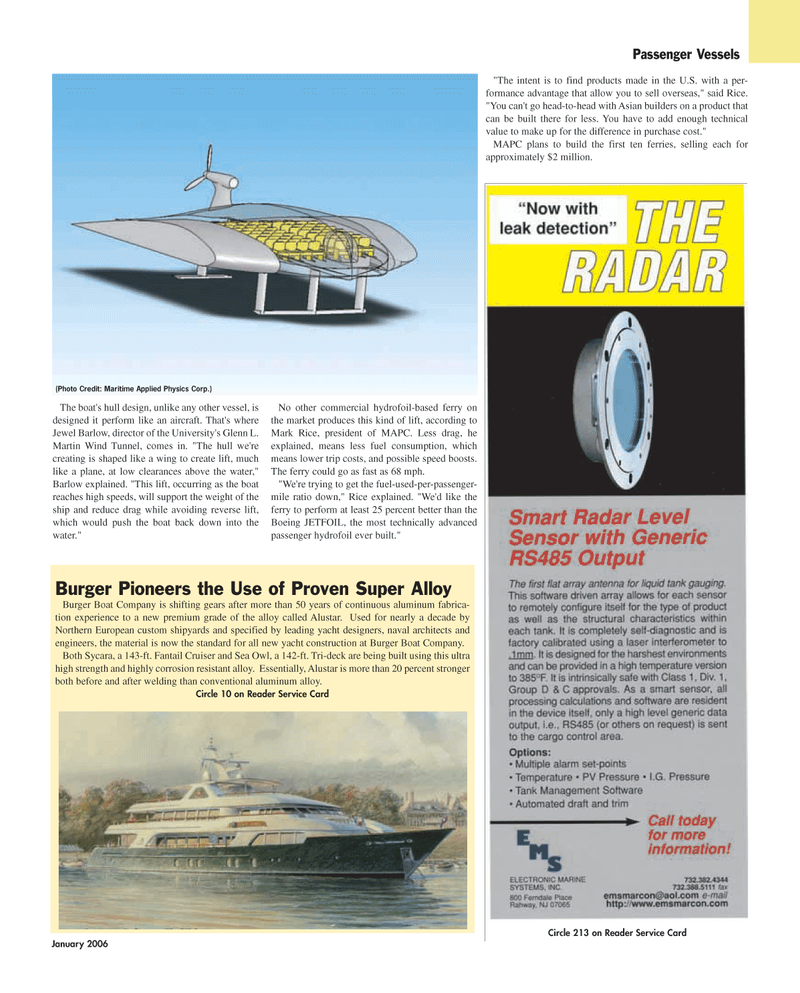
Page 25: of Maritime Reporter Magazine (January 2010)
Ship Repair & Conversion
Read this page in Pdf, Flash or Html5 edition of January 2010 Maritime Reporter Magazine
January 2006
The boat's hull design, unlike any other vessel, is designed it perform like an aircraft. That's where
Jewel Barlow, director of the University's Glenn L.
Martin Wind Tunnel, comes in. "The hull we're creating is shaped like a wing to create lift, much like a plane, at low clearances above the water,"
Barlow explained. "This lift, occurring as the boat reaches high speeds, will support the weight of the ship and reduce drag while avoiding reverse lift, which would push the boat back down into the water."
No other commercial hydrofoil-based ferry on the market produces this kind of lift, according to
Mark Rice, president of MAPC. Less drag, he explained, means less fuel consumption, which means lower trip costs, and possible speed boosts.
The ferry could go as fast as 68 mph. "We're trying to get the fuel-used-per-passenger- mile ratio down," Rice explained. "We'd like the ferry to perform at least 25 percent better than the
Boeing JETFOIL, the most technically advanced passenger hydrofoil ever built."
Passenger Vessels
Circle 213 on Reader Service Card (Photo Credit: Maritime Applied Physics Corp.) "The intent is to find products made in the U.S. with a per- formance advantage that allow you to sell overseas," said Rice. "You can't go head-to-head with Asian builders on a product that can be built there for less. You have to add enough technical value to make up for the difference in purchase cost."
MAPC plans to build the first ten ferries, selling each for approximately $2 million.
Burger Pioneers the Use of Proven Super Alloy
Burger Boat Company is shifting gears after more than 50 years of continuous aluminum fabrica- tion experience to a new premium grade of the alloy called Alustar. Used for nearly a decade by
Northern European custom shipyards and specified by leading yacht designers, naval architects and engineers, the material is now the standard for all new yacht construction at Burger Boat Company.
Both Sycara, a 143-ft. Fantail Cruiser and Sea Owl, a 142-ft. Tri-deck are being built using this ultra high strength and highly corrosion resistant alloy. Essentially, Alustar is more than 20 percent stronger both before and after welding than conventional aluminum alloy.
Circle 10 on Reader Service Card
MR JANUARY2006 #4 (25-32).qxd 1/3/2006 3:22 PM Page 25

 24
24

 26
26
